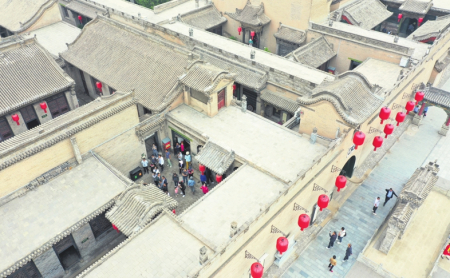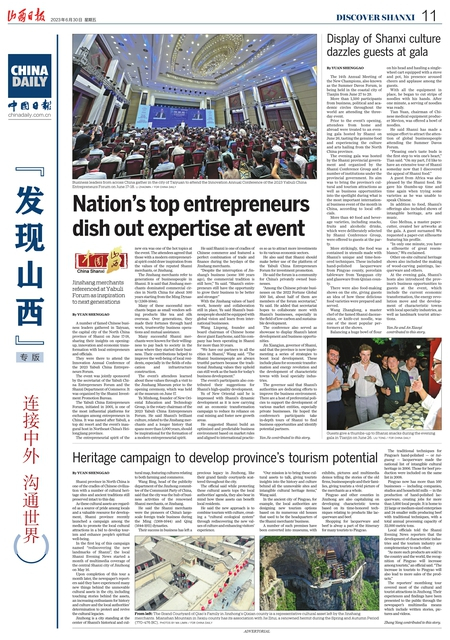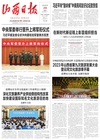Heritage campaign to develop province’s tourism potential

The Grand Courtyard of Qiao’s Family in Jinzhong’s Qixian county is a representative cultural asset left by the Jinshang merchants.

Mianshan Mountain in Jiexiu county has its association with Jie Zitui, a renowned hermit during the Spring and Autumn Period (770-476 BC). Photos by Ma Limin / For China Daily
Shanxi province in North China is one of the cradles of Chinese civilization with a number of cultural heritage sites and ancient traditions still preserved intact to this day.
As these cultural assets are regarded as a source of pride among locals and a valuable resource for development, Shanxi province recently launched a campaign among the media to promote the local cultural attractions in a bid to develop tourism and enhance people's spiritual well-being.
In the first leg of this campaign named Rediscovering the New Landmarks of Shanxi", the local Shanxi Evening News started a month of multimedia coverage of the central Shanxi city of Jinzhong on May 16.
Upon completion of this tour a month later, the newspaper's reporters said they have experienced many new things behind the unmovable cultural assets in the city, including touching stories behind the assets, an increasing enthusiasm for history and culture and the local authorities' determination to protect and revive the cultural legacies.
Jinzhong is a city standing at the center of Shanxi's historical and cultural map, featuring cultures relating to both farming and commerce.
Wang Bing, head of the publicity department of the Jinzhong committee of the Communist Party of China, said that the city was the hub of business activities of the renowned Shanxi merchants, or Jinshang.
He said the Shanxi merchants were the pioneers of China's large-scale foreign trade business during the Ming (1368-1644) and Qing (1644-1911) dynasties.
Their success in business has left a precious legacy in Jinzhong, like their grand family courtyards scattered throughout the city.
The official said while protecting these cultural assets tops the local authorities' agenda, they also bear in mind how these assets can benefit local residents.
He said the new approach is to combine tourism with culture, creating a "cultural ecological system "through rediscovering the new values of culture and enhancing visitors' experience.
"Our mission is to bring these cultural assets to talk, giving tourists insights into the history and culture behind all the unmovable sites and intangible cultural heritage items," Wang said.
In the ancient city of Pingyao, for example, the local authorities are designing new tourism options based on its numerous old houses that used to be the headquarters of the Shanxi merchants' business.
A number of such premises have been converted into museums, with exhibits, pictures and multimedia demos telling the stories of the old firms, businesspeople and their families, giving tourists a vivid picture of the merchants as a whole.
Pingyao and other counties in Jinzhong are also capitalizing on developing characteristic towns based on their time-honored techniques relating to products like lacquerware and beef.
Shopping for lacquerware and beef is alway a part of the itinerary for many tourists to Pingyao.
The traditional techniques for Pingyao's hand-polished — or tuiguang — lacquerware made the national list of intangible cultural heritage in 2006. Those for beef production were included on the same list in 2008.
Pingyao now has more than 160 businesses — including companies, studios and household mills — in the production of hand-polished lacquerware, creating jobs for more than 5,600 local people. It is home to 22 large or medium-sized enterprises and 24 smaller mills producing beef with traditional techniques, with a total annual processing capacity of 32,000 metric tons.
Local officials told the Shanxi Evening News reporters that the development of characteristic industries and the tourism industry are complementary to each other.
"As more such products are sold to the country and the world, the recognition of Pingyao will increase among tourists," an official said. "The increase in tourists to Pingyao will also lead to more sales of the products."
The reporters' monthlong tour covered most of the cultural and tourist attractions in Jinzhong. Their experiences and findings have been presented to the public through the newspaper's multimedia means which include written stories, pictures and videos.
By Yuan Shenggao
Zhang Yang contributed to this story.











